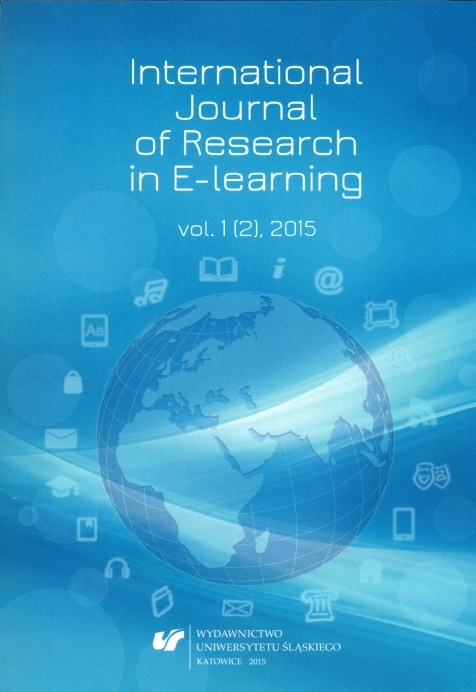Lapes, J., & Tochacek, D. (2012). Edukaćni robotika.Praha: Univerzita Karlova v Praze.
Limont, W. (2010). Pedagogika twórczości, czyli edukacja ku twórczości. In B. Śliwerski (Ed.), Pedagogika. Subdyscypliny i dziedziny wiedzy o edukacji,vol. 4. Gdańsk: GWP.
Maloney, J., Resnick, M., Rusk, N., Silverman, B., & Eastmond, E. (2010). The Scratch programming language and environment. ACM Transactions on Computing Education (TOCE) 10(4),article No. 16.
Morbitzer, J. (2013a). Konektywizm - edukacyjny przełom czy niespełniona nadzieja? In M. M. Sy- sło, & A. B. Kwiatkowska (Eds.), Uczyć się będąc połączonymi IwE 2013: X konferencja „Informatyka w Edukacji" 5-7 lipca 2013 UMK Toruń(pp. 35-42). Toruń: Wydawnictwo Naukowe UMK.
Morbitzer, J. (2013b). O konektywizmie kilka krytycznych refleksji, EDUNEWS.PL- portal o nowoczesnej edukacji.Accessed 17 February 2016. Retrieved from http://www.edunews.pl/badania- -i-debaty/dyskusje/2333-o-konektywizmie-kilka-krytycznych-refleksji.
Papert, S. (1999). Introduction: What is Logo? And who needs it? In LogoPhilosophy andImplemen- tation,Logo Computer Systems Inc., USA. Accessed 15 February 2016. Retrieved from http:// www.microworlds.com/company/philosophy.pdf.
Polak, M. (2010). Konektywizm: połącz się, aby się uczyć, EDUNEWS.PL- portal o nowoczesnej edukacji.Accessed 17 February 2016. Retrieved from http://www.edunews.pl/badania-i-debaty/badania/1068.
Resnick, M., Maloney, J., Monroy-Hernandez, A., Rusk, N., Eastmond, E., Brennan, K., Millner, A., Rosenbaum, E., Silver, J., Silverman, B., & Kafai, Y. (2009). Scratch programming for all. Communications of the ACM52(11), 60-67.
Resnick M. (2013). Learn to code, code to learn. edSurge. Accessed 15 February 2016. Retrieved from http://www.edsurge.com/n/2013-05-08-learn-to-code-code-to-learn.
Scratch - About.Accessed 15 February 2016. Retrieved from https://scratch.mit.edu/about.
Scratch info -Imagine, program, share. The Scratch terms of use.Accessed 15 March 2016. Retrieved from http://scratch.mit.edu/terms_of_use/.
Siemens, G. (2005). Connectivism. A learning theory for the digital age. International Journal of Instructional Technology & Distance Learning2(1). Accessed 15 February 2016. Retrieved from http://www. itdl.org/ journal/jan_05/article01.htm.
Stein, M., (1953). Creativity and culture. The Journal ofPsychology: Interdisciplinary and Applied 36,311-322.
Sysło, M. M. (2010). Commentary to: Sawiński J. P., Konektywizm, czyli rewolucja w uczeniu się?, EDUNEWS.PL - portal o nowoczesnej edukacji.Accessed 20 February 2016. Retrieved from http://www.edunews.pl/badania-i-debaty/badania/1077.
Google Scholar


